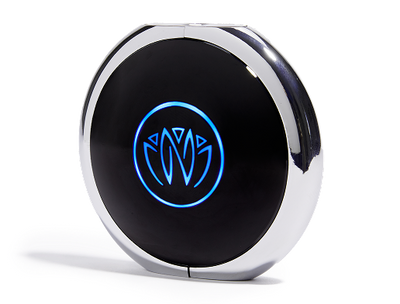There are a lot of words you're hearing more than ever this year: Pandemic, social distancing, face coverings, working from home, to name a few. Hopefully, you're seeing words like overcome, heal, and resilience too.
What is resilience?
Resilience is a lot more than a buzzword this year. It's our ability to overcome, adapt to, and recover from challenges or stressors.
And if you're like many people, you're facing more challenges and stress than ever before.
On any given day, we can experience countless threats (whether real or imagined) to our safety and well-being. In response to these threats, our body has certain systems in place.
One of them you likely know well is what's known as the fight-or-flight response. You get a rush of adrenaline to help this response along, and that can be a good thing.
But what happens if you're in a near-constant state of fight-or-flight mode?
Not only could your nerves be shot, but your ability to be resilient could suffer too.
But here's the good news: there are things you can do to promote resilience, including strengthening your body-based somatic intelligence.
What is somatic intelligence?
Your somatic intelligence refers to your ability to cope with, respond, and deal with challenges and danger. It's directly related to your ability to soothe yourself after a trauma or challenge.
The greater your somatic intelligence, the more resilient you can be.
Once you know HOW your body responds to stress and trauma, you can use this knowledge (or somatic intelligence) to respond appropriately.
Luckily, your somatic intelligence isn't set in stone.
When you tune into your body, you can use this knowledge to support your mind and body as you deal with life's challenges. You can improve your somatic intelligence and promote resilience at the same time.
How tuning into your body can promote resilience
To nurture our somatic intelligence, we need to look closely at the nervous system.
How can we soothe and relax our stress responses to promote resiliency? It requires tuning into our bodies and connecting with our innate ability to soothe, recover, and heal ourselves.
Here are five body-based practices for doing just that.
Breathing
For most of the day, breathing is a mindless activity. Our brain tells our body to breathe without us consciously considering doing so. But when we stop to tune into this response, we can use it to a greater advantage.
Each time we take a breath we activate the sympathetic branch of our nervous system a little bit. If you're experiencing a big reaction or heavy breathing, this branch activates even more. Then, as you let a breath out, the parasympathetic branch of the nervous system activates. If you're startled or stunned, this is further exaggerated.
By the way, we talk about the parasympathetic nervous system in greater detail over here in this post.
This back-and-forth between the sympathetic and parasympathetic nervous system is meant to keep us balanced. Naturally, life can get in the way of this balance.
Take a few moments each day to devote to breathing intentionally. Notice how your breath feels going in, and do the same each time you exhale. This promotes a balance within your nervous system while strengthening your somatic intelligence and promoting resilience.
Sighing
Think about the last time you took an audible sigh. Chances are, it was during a moment of stress or frustration. In fact, sighing is one of your body's ways to ease tension and actually reset your nervous system.
While sighs may often be passive, you can choose to let out an audible sigh to experience the tension relief and reset when you need it. When you're feeling incredibly emotional or on high-alert, your breathing pattern can be disrupted. This also disrupts the balance in your nervous system.
Studies show sighing is an effective tool for restoring this balance. And you don't need to wait for your body to do it naturally! In fact, instructed sighs and spontaneous sighs can both restore the ideal respiratory balance.
So, next time you're facing a difficult moment, try this technique to soothe yourself, promote resilience, and restore balance.
The power of touch
We know that cortisol is a stress hormone. Our bodies release it to aid with the "fight-or-flight" response to enable us to make quick decisions and actions. Our heart rate increases, non-essential functions are curbed, and sugar levels increase in the blood.
Under the right circumstances, higher cortisol levels are necessary.
But many of us are finding ourselves in a constant state of stress or "fight-or-flight" mode, and we're dealing with the consequences.
And that's where oxytocin comes in. Think of this hormone as the antidote to cortisol.
Rather than fight or flee, it tells the body to tend and befriend. It provides you with a cascade of positive emotions and pleasant feelings. No wonder it's associated with the birth of a baby or cuddling a pet!
In times of stress, you can use the power of touch to increase your levels of oxytocin to counteract the damaging effects of too much cortisol.
Try hugging a loved one for one minute, holding hands, or even just making prolonged eye contact and being in close proximity to another person and see how quickly you feel calmer and more resilient!
Tune into your heart
Now more than ever, it's not always possible to use the power of touch with another person.
If you're facing a challenge by yourself, try this instead to release oxytocin:
- Place a hand on your heart.
- Take slow, deep breaths.
- Tune into how your heart beats. How your hand feels on your chest. The way each breath feels as it flows through your body.
Anytime you're stressed or anxious, this is a good way to ground yourself and enjoy the release of oxytocin and the safe, trusting feelings it promotes.
Vagus nerve stimulation
Another tool for promoting resilience and restoring balance to the nervous system is vagus nerve stimulation.
Vagus nerve stimulation or VNS has been scientifically researched for decades for its power to improve wellness. Electrical stimulation of the vagus nerve sends messages to the brain to generate calming sensations in the body.
Your brain and body use somatic intelligence during or after stressful moments through a process called neuromodulation (nerves modulating your body’s response). As your parasympathetic nervous system kicks in, it balances the stress response by slowing your heart rate and breathing along with other key body functions.
Ultimately, this promotes relaxation.
What does the vagus nerve have to do with this? Well, it plays a key role in coordinating this relaxation response! The vagus nerve signals the brain to release calming neurotransmitters (compounds that affect systemic responses) like acetylcholine and serotonin.
So, how do you go about stimulating the vagus nerve to experience this relaxation response for yourself?
- A neuromodulation technology called tVNS (transcutaneous VNS) uses electrical stimulation through the surface of the skin, typically applied through the left ear. tVNS is convenient and can be applied by the user. It's easy to use to promote and maintain general health and wellness, as well as help improve your resilience..
Xen by Neuvana
For those looking for a convenient way to stimulate the vagus nerve, Xen by Neuvana is an excellent choice. Xen is for use by healthy adults to promote health and wellness (and even resilience!).
Xen by Neuvana Headphones are specifically designed to stimulate a branch of the vagus nerve. When you place the left earbud in your left ear, turn the Xen unit on, and pair it with the Neuvana app on your smartphone, it transmits a gentle electrical signal meant to stimulate the vagus nerve.
In turn, this could help strengthen your somatic intelligence, promote resilience, and encourage your body's innate ability to self-soothe.
Self-soothing leads to resilience
Each of the five body-based methods we've discussed for promoting resilience also encourage your body to self-soothe. When you're able to comfort yourself and restore balance within your nervous system after it's disrupted, you'll often find you can recover quicker and more easily.






